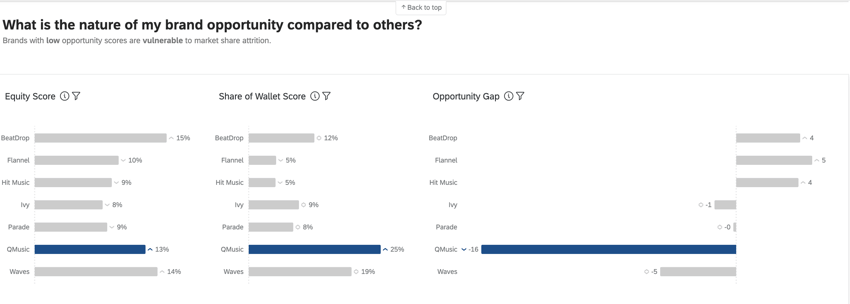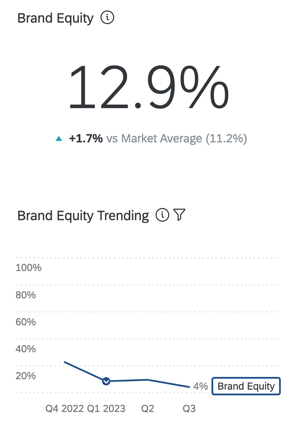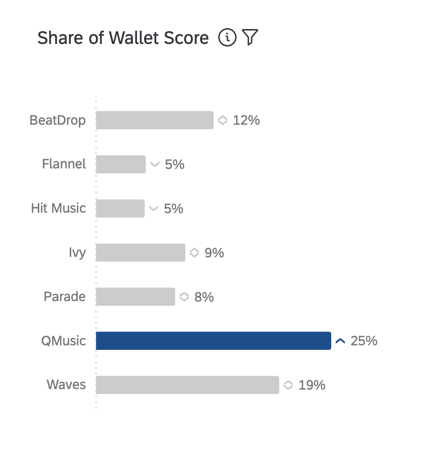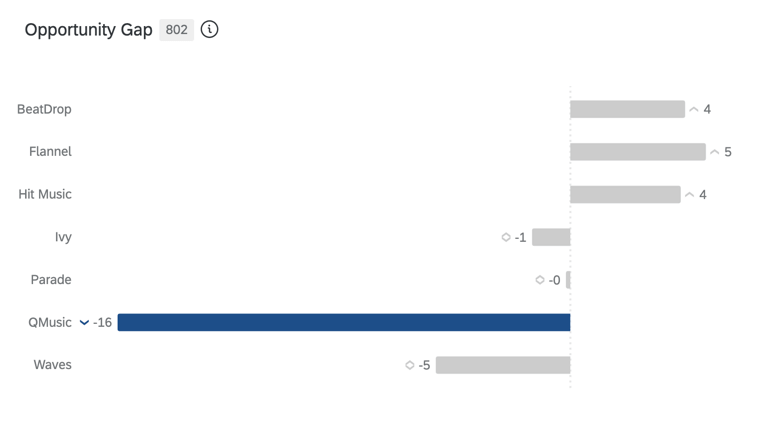BX Program Best Practices
About BX Program Best Practices
BX Programs let you conduct a comprehensive, ongoing assessment of the health of your brand compared with your key competitors. BX surveys create the data that is used to generate the brand tracker data source, a stacked dataset that makes the BX analytic tools and dashboard more robust. It is important to program your survey specifically so that it is compatible with creating a brand tracker data source.
Survey Structure
Most BX surveys follow the same basic structure designed to provide reliable responses and measure key metrics.
- Introduction and screener: Identifies relevant consumers of the brands/products in your category.
- Awareness: Measures how readily your brand comes to mind when prompted by your category.
- Usage: Measures how often respondents use or purchase each brand, historically and recently, as well as helps identify recently lapsed brand users and potential barriers to use or purchase.
- Barriers: Identifies major barriers to purchasing each brand.
- Summary Metrics: Provides a holistic measure of a customer’s brand experience.
- Imagery: Measures the perception of the brand in the mind of the customer.
- Communications: Determines ad awareness, which assesses the brand’s ability to access advertising memories.
- Demographics: Identifies key respondent demographics, which are used to filter data, if needed.
Qtip: Demographics data can be used to ensure that the sample of respondents is representative of the population you would like to study.
We recommend following these best practices when editing your survey content and structure.
- Use standard question types (single select, multi-select, or text entry) whenever possible. Have a clear plan for how you are going to map the data for any other types of questions.
- Avoid setups where respondents can answer the same question container for different content. For example, using one question to ask respondents to provide context on a randomly selected brand.
- Consider what filters you’d like to use on your dashboard and include ways to capture that information. For example, if you need to filter by age groups, be sure to create an age group embedded data variable.
- Consider what date ranges will be most relevant in your reporting. It’s common to create a “wave_date” embedded data field to capture the most relevant fielding period information in order to filter or bucket in dashboards.
Qtip: Fielding periods may not align with the Recorded Date or End Date fields, which is why the “wave_date” field is helpful for reporting. For example, your April wave might need to include some respondents from the beginning of May.
- Consider any custom variables that might be needed, and set them up using embedded data.
Programming Principles
In order to generate a Brand Tracker Data Source (BTDS) with your program, certain additional programming considerations are required:
- The brands must be entered in the reusable choice list.
- The question and answer text for brands must exactly match the reusable choice list.
- The brand-related survey questions must be organized into parallel survey blocks.
Reusable Choice List
The full brand list for the entire survey should be entered as a Reusable Choice List. The brand names throughout the rest of the survey must be identical matches to the names entered in the Reusable Choice List. For more information, see the support page linked.
Question and Answer Text
For questions repeated for each brand (also known as brand-led questions), the question label (e.g., “NPS_brandX”) and question text (e.g., “How likely are you to recommend [brand X] to a friend or colleague?”) should be consistent.
For questions with brands as the answer choices, make sure to set the Variable Name as the brand in the reusable choice list if the answer choice text is different than the brand name (e.g., if there is HTML for an image or additional text).
Parallel Survey Blocks
A Parallel Survey Block is when a series of questions about a single brand is grouped together in a survey block, and there is a survey block for each brand. Each block name should follow the same naming pattern, which will cause the questions within them to be considered parallel. Qualtrics will stack parallel questions together.
Stacking Embedded Data
By default, embedded data fields will not be stacked. However, stacking embedded data fields is often necessary for custom brand variables that compute and measure brand data.
Stacked embedded data fields should be added to the top of the survey flow with the value “0” and the following naming convention:
gbt__v1__[Stack Type]__[Column Name]__[Brand Name]- Create your embedded data variable at the top of the survey flow.
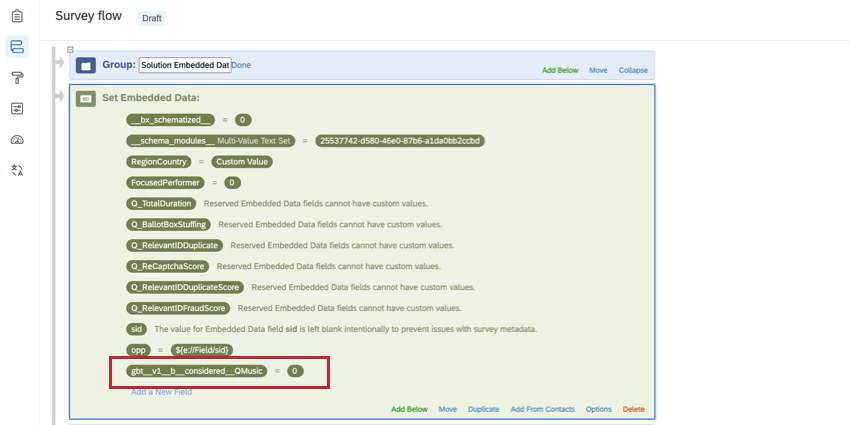
- Add a branch logic element after the question that you want your embedded data value to be set from.
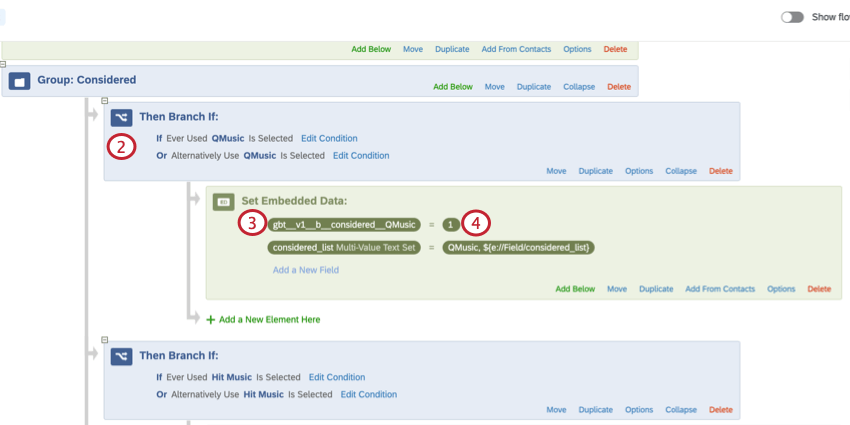
- Add an embedded data element inside of this branch.
- Set the embedded data variable equal to 1.
- Be sure to click Apply to save your survey flow, and then publish your survey.
See the sections below for more information on creating your stacked embedded data variable.
Stack Type
The stack type refers to the type of variable that is being referenced for this Embedded Data. There are two stack types:
- Binary (b): The variable only has two potential values. For example, for the variable “Consideration”, a brand either is considered (1) or is not considered (0).
- Normal (n): The variable has an unlimited number of numeric options, and contains either a computed value or the value that a respondent has selected for a question.
| Stack Type | Example Format | Example Use Cases |
| b (binary) | gbt__v1__b__Consideration__QMusic | Favorite, Computed Consideration |
| n (normal) | gbt__v1__n__Share of Wallet__QMusic | Brand Equity, Share of Wallet |
Column Name
The column name is what you want to appear as the embedded data variable in the BTDS.
| Stack Type | Example Format | Example Use Cases |
| b (binary) | gbt__v1__b__Consideration__QMusic | Favorite, Computed Consideration |
| n (normal) | gbt__v1__n__Share of Wallet__QMusic | Brand Equity, Share of Wallet |
Brand Name
The brand name indicates which brand the data in the variable is referring to.
| Stack Type | Example Format | Example Use Cases |
| b (binary) | gbt__v1__b__Consideration__QMusic | Favorite, Computed Consideration |
| n (normal) | gbt__v1__n__Share of Wallet__QMusic | Brand Equity, Share of Wallet |
Autocoded Unaided Awareness
Unaided Awareness measures which brands come to mind when you mention a specific category (e.g., “When you think of [category], which brand comes to mind first?”). Autocoded Unaided Awareness (AUA) ensures that variations in spelling, capitalization, or common acronyms are corrected so that we can properly group the data. This is done by creating a web service in the survey flow.
The AUA web service looks at the open text data entered and compares it to a Brand Dictionary that you create. If the entry is similar to a brand name within a small number of character deviations, the web service recodes the entry to match the Brand Dictionary.
Qtip: Why use AUA instead of Text iQ?
- AUA is handles proper nouns and names, whereas Text iQ is focused on common language terms and grammatical structures in longer form text entries.
- AUA recodes text responses in real-time during the survey session, so you do not need to wait for any processing to see the values. You can also use the results in survey logic, if needed.
- You can stack AUA results in order to leverage significance testing and other analytic options throughout Qualtrics’ analysis and dashboards.
AUA DETAILS
- Only languages supported by the Qualtrics platform are compatible with AUA. Custom languages are not supported.
- A given brand can have several entries included (e.g., “Qualtrics” could include entries for “Qualtrics”, “Qualtrics Software”, “Qualtrics Research”, and “Qualtrics XM” to ensure variations of all of these are recoded as just “Qualtrics”).
- The length of the brand name influences how far off the respondent’s spelling can be from a brand entry in the Brand Dictionary.
- Responses that are 3 characters or less are not allowed any deviations and must exactly match the Brand entry. For example, “Ivy” would need to be exactly spelled as “Ivy”.
- Responses that are 4 characters are allowed one deviation. For example, “QHub” would accept variations like “Qub” and “QHb”.
- Responses that are 5 characters are allowed two deviations. For example, “Flanel” would accept variations like “Flannel” or “Flnl”.
- Responses that are 6+ characters are allowed three deviations. For example, “BeatDrop” would accept variations like “BeatD” or “BetDrp”.
Brand Equity, Share of Wallet, and Opportunity Gap
Brand Equity, Share of Wallet, and Opportunity Gap metrics are used in BX Dashboards to provide advanced insights on brand performance.
BRAND EQUITY
Brand attitudinal equity measures which brand consumers would choose if there were no barriers to purchasing or using a product. When viewed in aggregate, brand attitudinal equity reflects the expected market share of your brand. This is a percentage that should total 100 (e.g., 75% of consumers would purchase my brand if they could, but 25% would prefer to purchase [x] brand).
Its approach is simple and requires only a few questions (ownership, consideration, and brand rating). Relative brand ratings are transformed into “ranks” and then into “predicted share.” These measures have a strong correlation with behaviors.
SHARE OF WALLET, OR ESTIMATED MARKET SHARE
Share of wallet, also known as “estimated market share”, measures how much of the respondents’ recent usage is attributed to each brand. This is generally a percentage that should total 100 (e.g., in the last 6 months, 75% of my [category] purchases have been with [x] brand and 25% with [y] brand).
OPPORTUNITY GAP
Opportunity gap is the difference between your brand attitudinal equity and estimated market share—in other words, the gap between the desire for your brand and actual purchase behavior. Opportunity exists when equity is greater than share (positive scores) and vulnerability is present when equity is less than share (negative scores).
